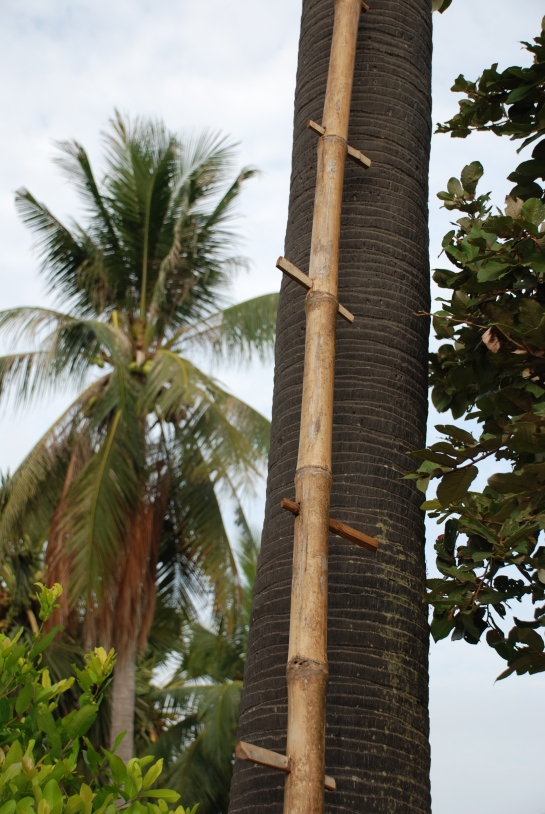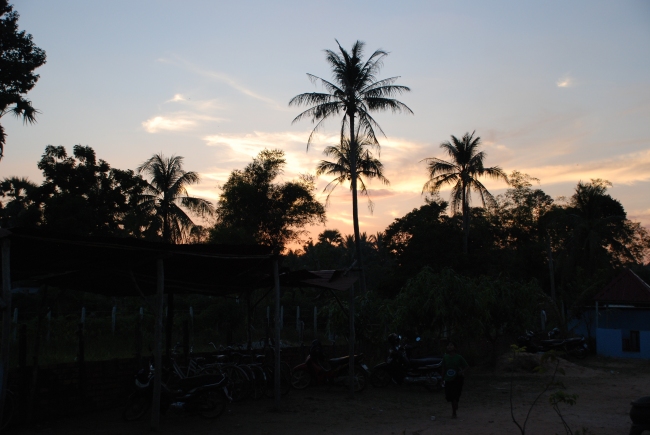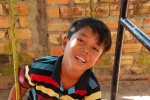
Roofing is always a challenge in rural Cambodia. There is corrugated iron which is watertight during the wet season, but proves far too hot during the dry hot months of March through to June. Living under zinc is like living in a brutally hot oven, a point lost I feel, with a few of the Habitat for Humanity projects I have seen.
Better than the tin is roofing tiles, and architecturally these have a reference back to the red earth of Cambodia itself. Cost wise, tiles are out of reach for many rural families, and actually too heavy for many huts which are built out of bamboo.
This leaves thatch roofing which is cool, inexpensive, and comfortable – at least until the heavy rains come. In Bakong, locals earn spare money thatching palm leaves together into panels which they then take into the markets of Siem Reap.
One day Savong and I were driving back to Siem Reap from the school, and we came across two young men on their bicycles, loaded up with thatch panels about to make the long trek. Savong wound down his window and asked if they would prefer to deliver the roofing to the SOC instead. He handed them a few dollars and next day when we came to the children’s home I saw the thatch roofing placed carefully on top of the iron roofing which stood at the time – helping the buildings to stay much cooler. I love thatch – and I love the craftsmanship that goes on to weaving this material, and attaching it so elegantly to traditional bamboo structures.
I imagine if you grew up in rural Cambodia, and then later moved to the big city one of the things you would miss would be the organic almost vanilla fragrance of those lovely thatch panels.
See also the Bamboo ladder






You must be logged in to post a comment.